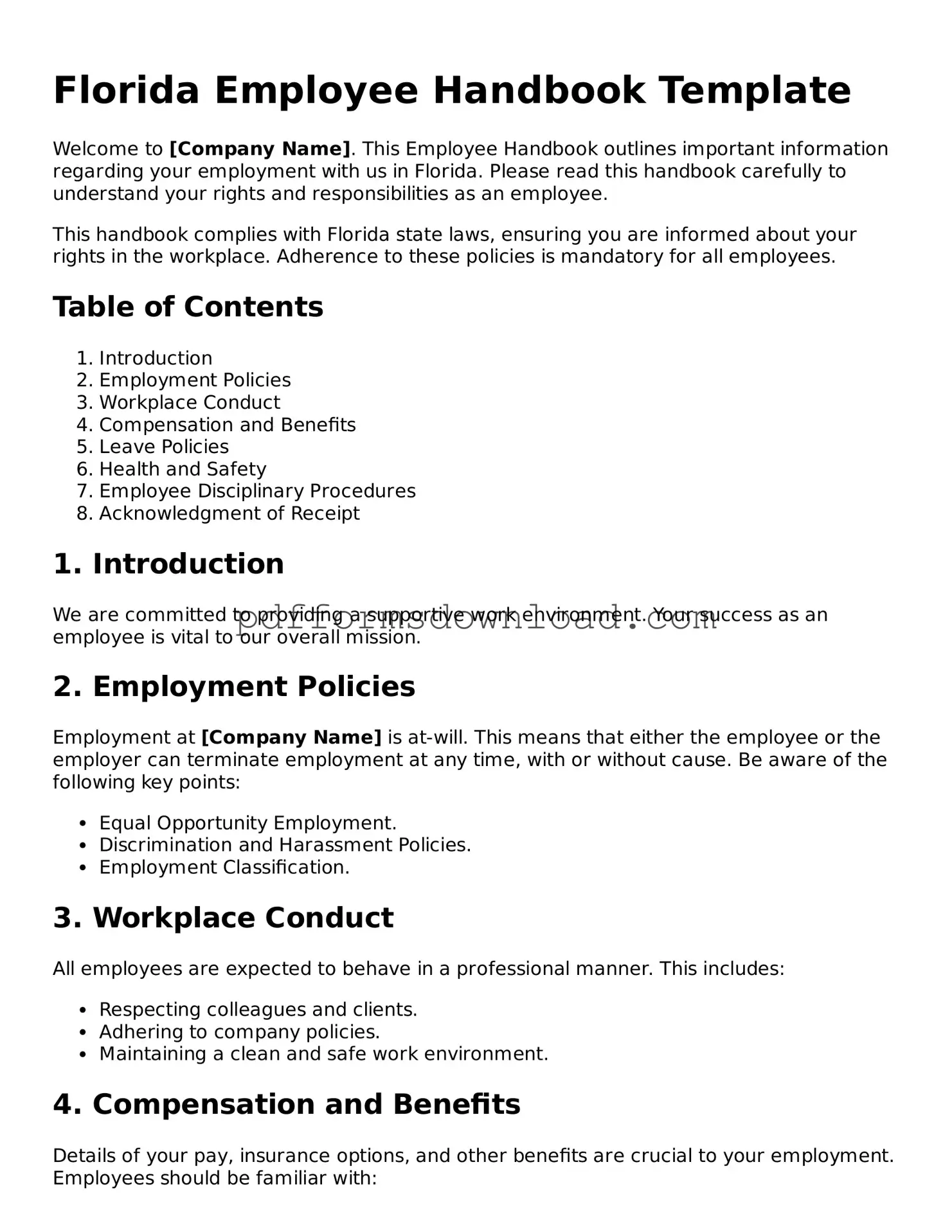What is the purpose of the Florida Employee Handbook form?
The Florida Employee Handbook form serves as a comprehensive guide for employees, outlining the company's policies, procedures, and expectations. It helps ensure that all team members understand their rights and responsibilities within the workplace. By having a clear handbook, employers can foster a positive work environment and promote compliance with state and federal regulations.
Who is required to have an Employee Handbook in Florida?
While not all Florida employers are legally required to have an Employee Handbook, it is highly recommended for businesses of all sizes. Having a handbook can protect the company by providing clear guidelines for employee behavior and company policies. Employers with a certain number of employees or those in specific industries may find it particularly beneficial to have a formal handbook in place.
How often should the Employee Handbook be updated?
It is advisable to review and update the Employee Handbook at least once a year or whenever there are significant changes in company policies, state laws, or federal regulations. Regular updates ensure that the handbook remains relevant and compliant with current laws. Additionally, keeping the handbook up-to-date helps employees stay informed about any new policies or changes that may affect their employment.
What should be included in the Florida Employee Handbook?
A well-rounded Employee Handbook should include sections on company values, workplace policies, employee benefits, code of conduct, and procedures for reporting issues or grievances. It should also cover topics such as attendance, dress code, disciplinary actions, and safety protocols. Including a clear statement about equal employment opportunity and anti-discrimination policies is essential to promote a fair and inclusive workplace.
